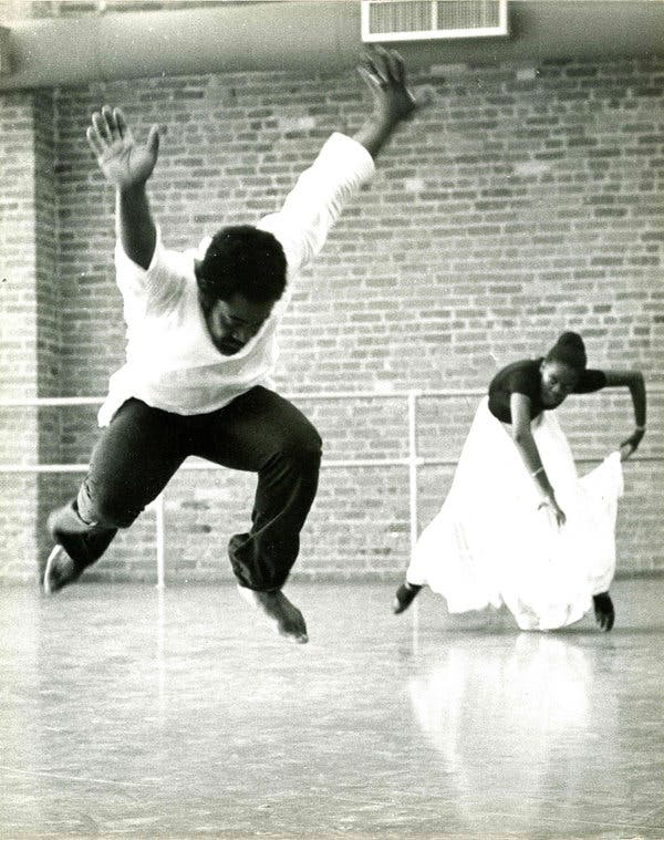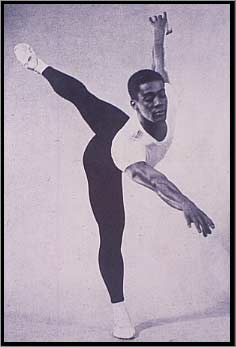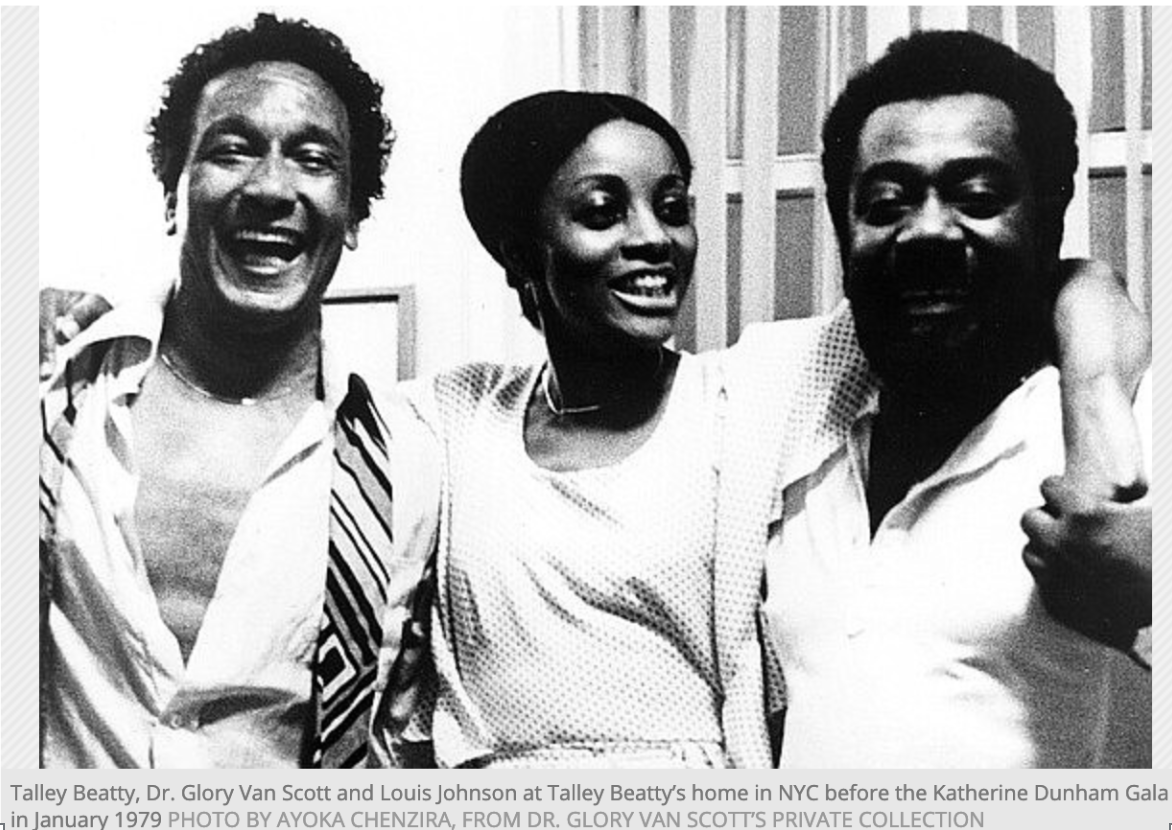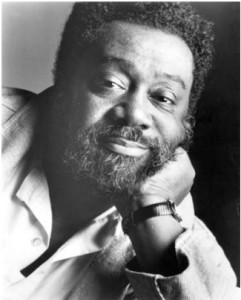Arthur Mitchell/Dance Theatre of Harlem and Louis Johnson

Louis Johnson was a genre-crossing dancer and choreographer for Dance Theatre of Harlem under Arthur Mitchell. He was mentored by George Balanchine and Jerome Robbins and studied with Katherine Dunham. In 1952, he performed with the New York City Ballet in Jerome Robbins’ Ballade, and Robbins created the role in Afternoon of the Faun for Johnson. However, Balanchine was not ready for a mixed-race pas de deux, so Johnson was not cast for the role.
Johnson began choreographing in 1953, and over the years, he created several ballets for Dance Theatre of Harlem including its first signature work Forces of Rhythm in 1972.
In a 1975 New York Times interview, he says “very few blacks have had all the experiences I’ve had.”
Source:
Jones-Haywood School of Ballet and Louis Johnson


Although Johnson became quickly known in the Washington DC school system for his outstanding artistic talents, he also developed a strong following for his gymnastic and dancing talents. He started out as an acrobat before being discovered by Doris Jones and Claire Haywood; they gave him a scholarship to their dance school in Washington.
“His body worked in such a way,” Ms. [Glory] Van Scott said, “He did gymnastics. He also was at the point where they wanted him to be an Olympic swimmer. He swam like a fish. So he came with these gifts already part of his body.”

Source:
Louis Johnson, The History Makers
Louis Johnson and School of American Ballet/Jerome Robbins
In 1950, Johnson earned a spot at New York’s School of American Ballet, the affiliate school of New York City Ballet. Black students were a rarity at the school. Although Mr. Johnson never joined City Ballet, the choreographer Jerome Robbins featured him in 1952 as a guest artist alongside five City Ballet dancers in Ballade. Mr. Johnson was an inspiration for Robbins’s 1953 work “Afternoon of a Faun.” However, Balanchine was not ready for a mixed-race pas de deux, so Johnson was not cast for the role. His legacy would be carried on through Arthur Mitchell, who performed the Agon pas de deux with partner Diana Adams.
Source:
Louis Johnson, 90, Genre-Crossing Dancer and Choreographer Dies, The New York Times
More about Louis Johnson
 Louis Johnson was born on March 19, 1931 in Statesville, North Carolina and grew up and spent most of his childhood in Washington DC. The Johnson family lived two blocks from the YMCA, and Johnson took advantage of all the activities the “Y” had to offer. He was a great athlete and became a champion wrestler and noted acrobat. When the YMCA had to close for repairs, the YWCA offered them space. The ballet teacher at the YWCA noticed Johnson and gave him a scholarship at the Doris Jones-Clara Haywood School of Dance. After initial study at the Doris Jones-Clara Haywood School of Dance, he moved to New York in 1950 to accept a scholarship at the School of American Ballet.
Louis Johnson was born on March 19, 1931 in Statesville, North Carolina and grew up and spent most of his childhood in Washington DC. The Johnson family lived two blocks from the YMCA, and Johnson took advantage of all the activities the “Y” had to offer. He was a great athlete and became a champion wrestler and noted acrobat. When the YMCA had to close for repairs, the YWCA offered them space. The ballet teacher at the YWCA noticed Johnson and gave him a scholarship at the Doris Jones-Clara Haywood School of Dance. After initial study at the Doris Jones-Clara Haywood School of Dance, he moved to New York in 1950 to accept a scholarship at the School of American Ballet.
In 1940 Ballet Theatre (now American Ballet Theatre) had their premiere opening season at the Center Theater (across the street from Radio City Music Hall). On the program was a Black group dancing in Agnes de Mille’s Black Ritual.
In 1952, Johnson performed with the New York City Ballet in the premiere of Jerome Robbins’ Ballade. Robbins also used Johnson to create the role in Afternoon of a Faun, but because Johnson was Black he was not allowed to dance the role. In 1953 George Balanchine didn’t think New York City Ballet was ready for a racially mixed pas de deux.
Throughout the 1950s, Johnson danced on Broadway in several shows including My Darlin’ Aida, House of Flowers, and Hallelujah Baby! He appeared in both the stage and screen versions of Bob Fosse’s Damn Yankees.
He also performed in the Broadway productions Les Blancs, Kwamina, and Four Saints in Three Acts (revival).
Johnson began making dances in 1953 and achieved his greatest fame as a choreographer who comically combined a continuum of movement styles, including social dances, popular music, classical ballet technique, Katherine Dunham-inspired modern dance, spiritual dancing, and acrobatics.
His two most popular ballets are Forces of Rhythm (1972), created for the Dance Theatre of Harlem, and Fontessa and Friends (1981), first performed by the Alvin Ailey American Dance Theater. In 1970 Johnson was nominated for a Tony Award for his choreography of Purlie, a musical version of Ossie Davis’ Purlie Victorious. He also choreographed the films Cotton Comes to Harlem (1970) and The Wiz (1978). Johnson staged the Houston Grand Opera’s 1975 revival of the Scott Joplin opera Treemonisha, which included a reconstruction of the “slow drag,” a 19th-century African American social dance.
Active as an arts educator and teacher since the 1970s, Johnson has conducted Black arts symposiums at Howard, Yale, Virginia State, Hampton Institute, and Morehouse College and in 1986, was appointed as the director of the dance division of the Henry Street Settlement on the Lower East Side of Manhattan; he continued to work there until 2003.
Johnson choreographed the following productions: La Giaconda (Metropolitan Opera, starring Martina La Rowa), Aida (Metropolitan Opera, starring Leontyne Price), Purlie, and Lost in the Stars (revival) and was a creative consultant for Play On!. Johnson has also mounted ballets for the Cincinnati Ballet, Alvin Ailey American Dance Theater, the Joffrey Ballet, Philadanco Dance Company, Dance Theatre of Harlem, and Atlanta Ballet. His directorial credits include Porgy and Bess, Miss Truth, Jazbo Brown, Time in the Wind, and Ebony Game.
Johnson’s honors include: the Pioneer Award from the International Association of Blacks in Dance at the Kennedy Center in Washington DC, an honor from the California chapter of the NAACP for his work with the original Negro Ensemble Company, and a special night honoring him from Ashford and Simpson.
Source:

